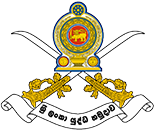SRI LANKAN Armed Forces’ yesterday (3) marked their unprecedented triumph over the LTTE with a striking show of fighting forces and military assets ranging from Czechoslovakian-built RM 70 mobile multiple launch rocket systems, movable Indian radar (Indra Mark II) to a fleet of Israeli, US and locally made Fast Attack Craft (FACs) built with Japanese collaboration.
Despite heavy international pressure Sri Lanka managed to secure much needed supplies to keep up the momentum. Had there been a breakdown in supplies, the LTTE would have been able to hang on a little bit longer.
Also on display were the Multi Sensor Integrated System (MSIS) mounted on fighting vessels and armoured fighting vehicles, mostly of Chinese origin and a range of artillery pieces acquired from China. Israeli-built MSIS with night vision and radar capability acquired at the tail end of the offensive had facilitated naval operations against the LTTE. But the Navy had far more powerful land based MSIS of Italian origin on the north-eastern coast to thwart LTTE attempts to launch boats stealthily.
Also on parade were the Police, its elite para-military wing, the STF and the Civil Defence Force (CDF). The STF played a critical role in the overall security strategy to weaken the enemy in the eastern theatre and in covert operations. The STF contingent on parade was one of the smartest along with the elite Special Forces, Commandos and the Special Boat Squadron.
Wednesday’s display of firepower was undoubtedly the biggest ever since the gradual transformation of the country’s ceremonial armed forces to a cohesive fighting force. A three-year campaign spearheaded by the first serving General Sarath Fonseka brought the LTTE to its knees last month.
Chief of Defence Staff (CDS) retd. Air Chief Marshal Donald Perera General Sarath Fonseka, Admiral Wasantha Karannagoda and Air Chief Marshal Roshan Goonetilike joined President Mahinda Rajapaksa on a special dais to take the salute following a 21-gun salute. A smiling Defence Secretary Gotabhaya Rajapaksa whose contribution made Sri Lanka’s victory possible sat in the front row with his wife enjoying the finest hour for Sri Lankan forces.
Among the armoured fighting vehicles on display was a mixture of Russian and Chinese armoured fighting vehicles including BTR 80 A, BTR 80 and T 85 along with Czechoslovakian-built T 55 main battle tanks. A range of artillery pieces of Chinese origin and RM 70 mobile multiple launch rocket systems aka as MBRL were some of the main attractions at yesterday’s parade.
Among the state of the art equipment displayed by the Army Signals Corps are of Japanese, Indian and French origin. General Fonseka’s brainchild, the Mechanized Infantry Brigade formed two years ago paraded some of its Russian and Chinese armoured fighting vehicles. The Brigade attached to the 53 Division stationed in the Jaffna peninsula before capture of Elephant Pass comprised over 100 armoured fighting vehicles.
But the destruction of the LTTE wouldn’t have been possible without bolstering the infantry. Of some 80,000 recruits who had joined the army over the past three years, the majority strengthened the SLLI (Sri Lanka Light Infantry), Sinha Regiment, Gemunu Watch, Gajaba Regiment, Vijayaba Infantry Regiment and the National Guard. The Commandos and Special Forces, too, received a tremendous boost over the last three years.
The armed forces and police lost 6,200 officers and men in the three-year war with the army paying a heavy price to finish off the Tigers.
President Mahinda Rajapaksa in his inspiring 40 minute speech to the nation declared that the ground forces fought under extremely difficult conditions to achieve victory.
To his credit, General Fonseka maintained his troops on a UN peace keeping mission in Haiti as he met the LTTE military challenge. While bloody fighting was on General Fonseka expanded the army to almost 200,000.
The unprecedented naval parade included three Indian OVPs (SLNS Sayura, SLNS Sagara, 623), SLNS Samudura formerly of the US Coast Guard, Fast Missile Vessels, SLNS Suranimala and SLNS Nandimithra acquired from Israel, two Chinese heavy gunboats, Udara and Prathapa, troop carrier Jetliner of Indonesian origin. Twenty five FACs and 20 locally built boats of navy Special Forces, too, joined yesterday’s impressive display. The big ships played a pivotal role in the war by sinking eight LTTE ships on the high seas.
Also on display were 14.4 mm (Chinese), 23 mm (Bulgarian), 25 mm (Chinese), 37 mm (Chinese), 107 mm rockets also of Chinese origin now deployed both on land and on ships as well as Gabriel Mark II missiles (Israel). Sri Lanka has received eight missiles along with the two Fast Missile Vessels acquired years ago. None of them had been used.
The Navy accommodated armoured personnel carriers turned out by its personnel in the parade. The army, too, displayed armoured personnel carriers built by its personnel. Had the navy bothered to remove a 30 mm Bushmaster weapon from one of its FACs, the people could have seen a powerful US weapon which helped the navy to overwhelm fast moving LTTE craft on many a occasion.
The air display included altogether about 40 helicopters and fixed wing aircraft including Bell 212s and Bell (US), Mi 17, Mi 24s, MiG 27s (Russian), PT 6, Y 12, K 8 , F7 (China) and Kfirs (Israel). Also on display were C 130 medium lift aircraft, the largest transport aircraft in service with the SLAF and AN 32s of Russian origin.
Although there was no mention of Unmanned Aerial Vehicles (UAVs) acquired from Israel, the eye in the sky as they were also known played a critical role in the war. There was also no mention of the Chinese 3 D radar station at Mirigama.
But the SLAF displayed 20 mm (Israel) and 23 mm (Bulgarian) along with 40 mm L 70 anti aircraft weapon acquired from India.
(Courtesy : The Island)

